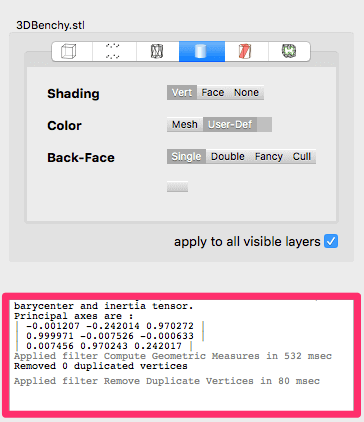

It runs in 2-d, 3-d, 4-d, and higher dimensions. Qhullcomputes the convex hull, Delaunay triangulation, Voronoi diagram, halfspaceintersection about a point, furthest-site Delaunay triangulation, andfurthest-site Voronoi diagram. Structure Synthgenerates 3D structures by specifying a design gramma r. General nonlinear least-squares algorithm library. Of The a Levenberg-Marquardt algorithm that Finds IS AN Iterative Technique A local Minimum function that OFA Expressed IS AS SUM of Squares The Functions of Nonlinear. Library for compression of 3D triangle meshes.įile compression program that uses the Burrows–Wheeler algorithm.Įxtract and manipulate JPEG EXIFinformation of photos. įast mathematical expressions parser library. For the compilation details, please refer to the precautions section.Īutodesk 3D Studio file C language library. Because the files in vcglib and meshlab will use them, when compiling the meshlab project, you need to compile the project in this directory (copy the generated lib file to the distrib directory).
#MESHLAB MAKE SOLID CODE#
The third-party source code library directory. Mainly include plug-in parameter/script analysis, plug-in interface definition, plug-in management, mesh management base class, etc. The following is the main source directory structure of meshlab :īasic file directory. The grid processing system developed by QT uses vcglib at its core. For example: mpir.libģ.3 In the source code of decorate_background plug-in, the picture is missing: " /textures/cubemaps/uffizi.jpg ".ģ.4 There are files in the filter_clean plug-in source code, which depend on another plug-in source code: edit_pickpoints.ģ.5 Through functions such as vcg::CallBackPos, callbacks can be made between MeshLab and VCGLab.

For example: D:\Qt\Qt5.2.1)ģ.2 In the filter_csg plug-in source code, a third-party library that is not in the source code is quoted.
#MESHLAB MAKE SOLID INSTALL#
Both Meshlab and VCGlib are the works of the Italian National Research Institute.Ģ.3 QT 5.2.1 (It is recommended to install to D drive, the directory is default. The purpose of this system is to assist in the processing of unstructured models generated by 3D scanning, and to provide a set of tools for editing, cleaning, repairing, checking, rendering and converting meshes in this format. MeshLab is an open source, portable, and expandable system for processing and editing unstructured triangular meshes. By default, OpenGL considers a polygon with a counterclockwise wraparound to be the front side, and a clockwise wraparound as the back side. The simplest and most practical polygon is a triangle. A polygon is a closed shape that can be filled with color or texture data.

In order to draw a solid surface, we need not only points and lines, but also polygons. The graphics created by using vertices and line segments are just some lines and cannot be filled with any color.

Computer scene rendering is nothing more than the flexible use of four techniques of transformation, coloring, texture and blending. Any solid 3D geometry is nothing more than connecting the points between vertices, and then rasterizing the triangles to make the object solid. Open GL is a programming interface for low-level rendering of 3D images. Primary exploration of Meshlab source code


 0 kommentar(er)
0 kommentar(er)
